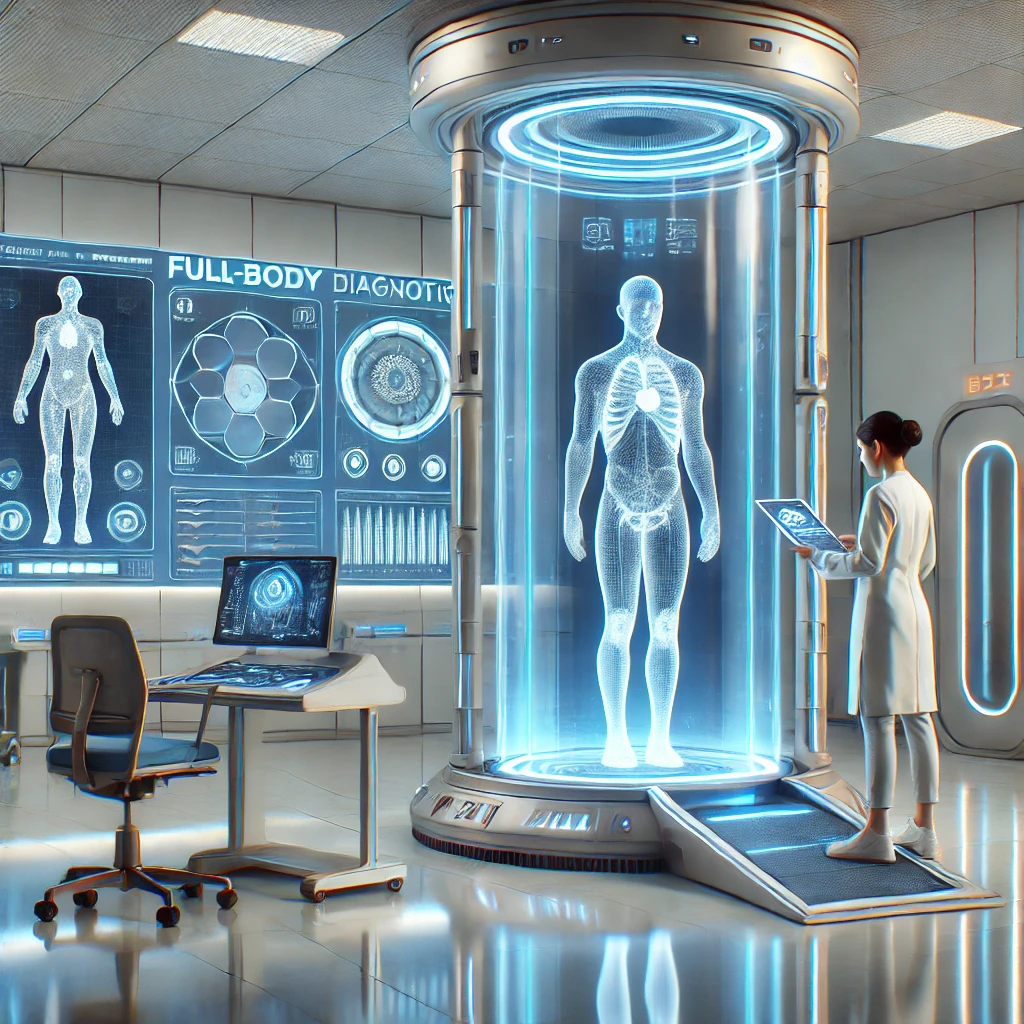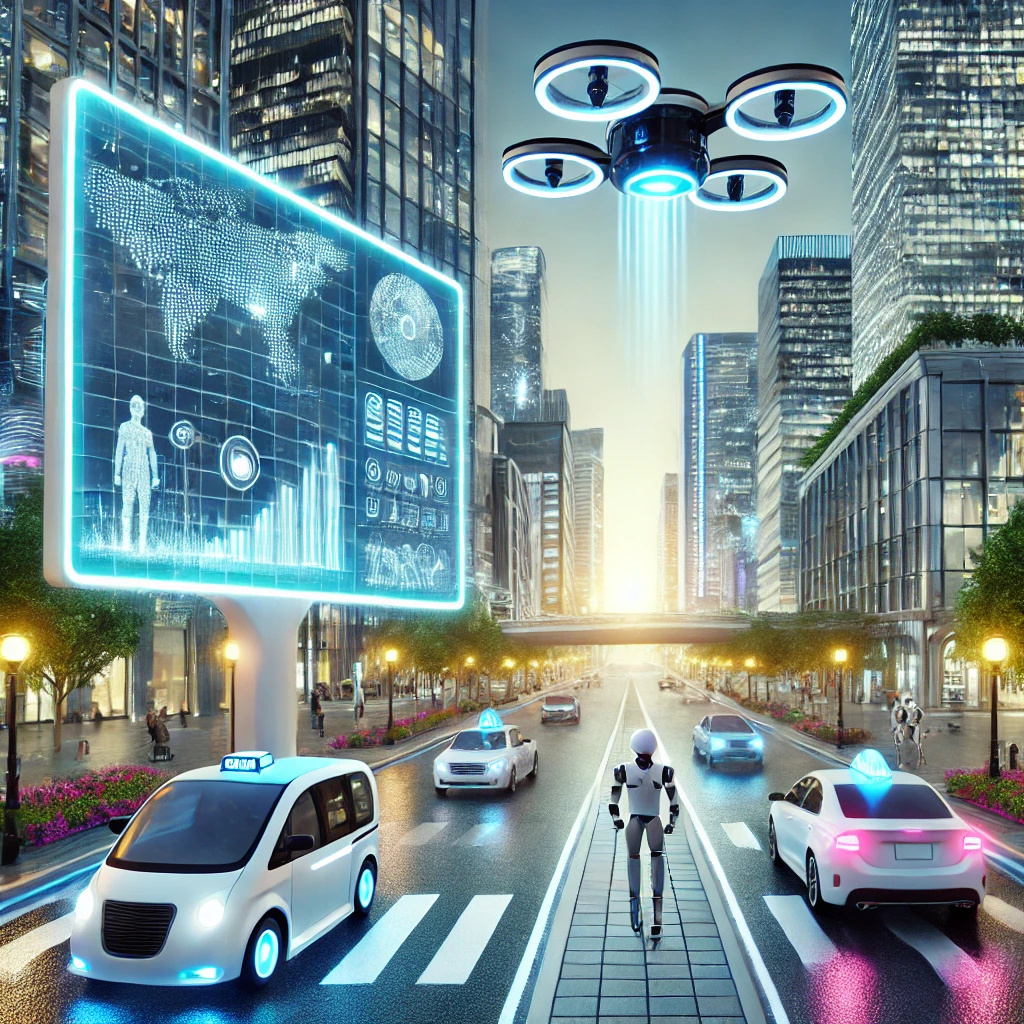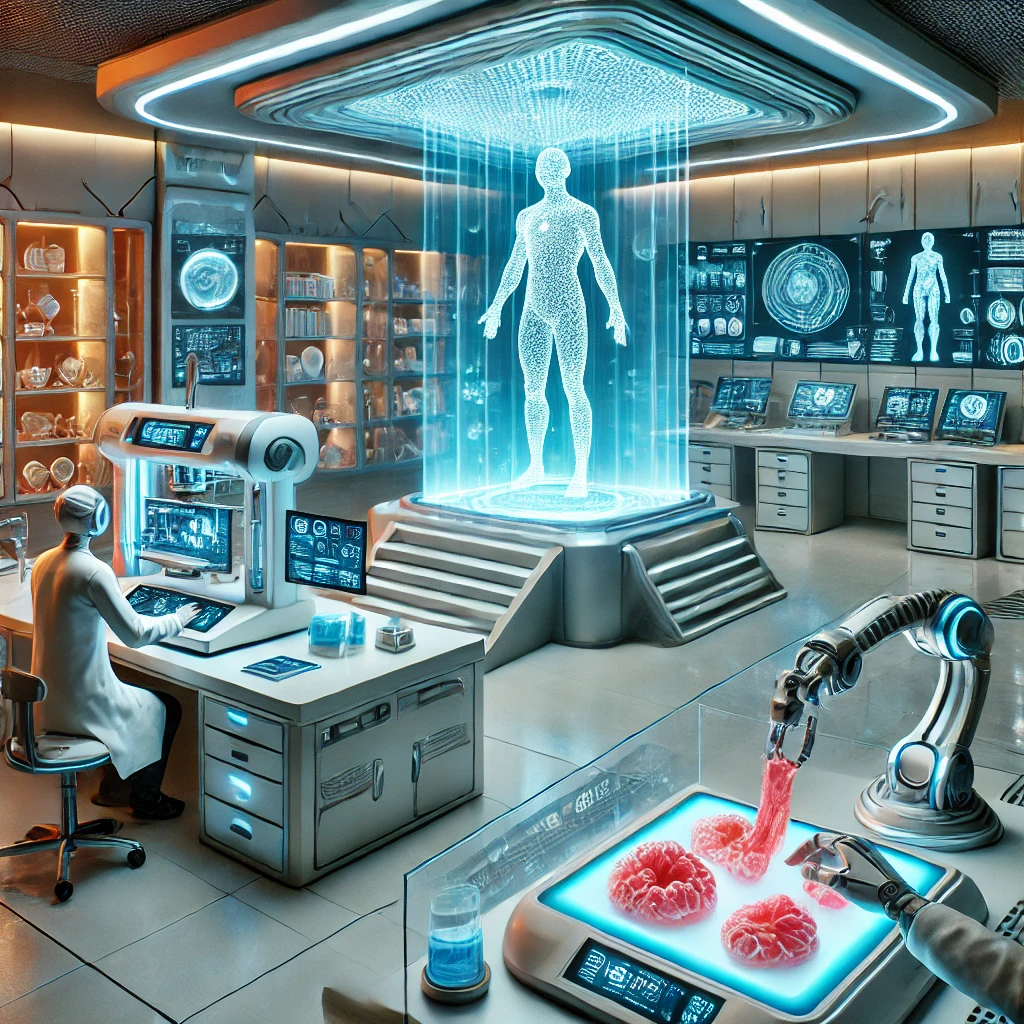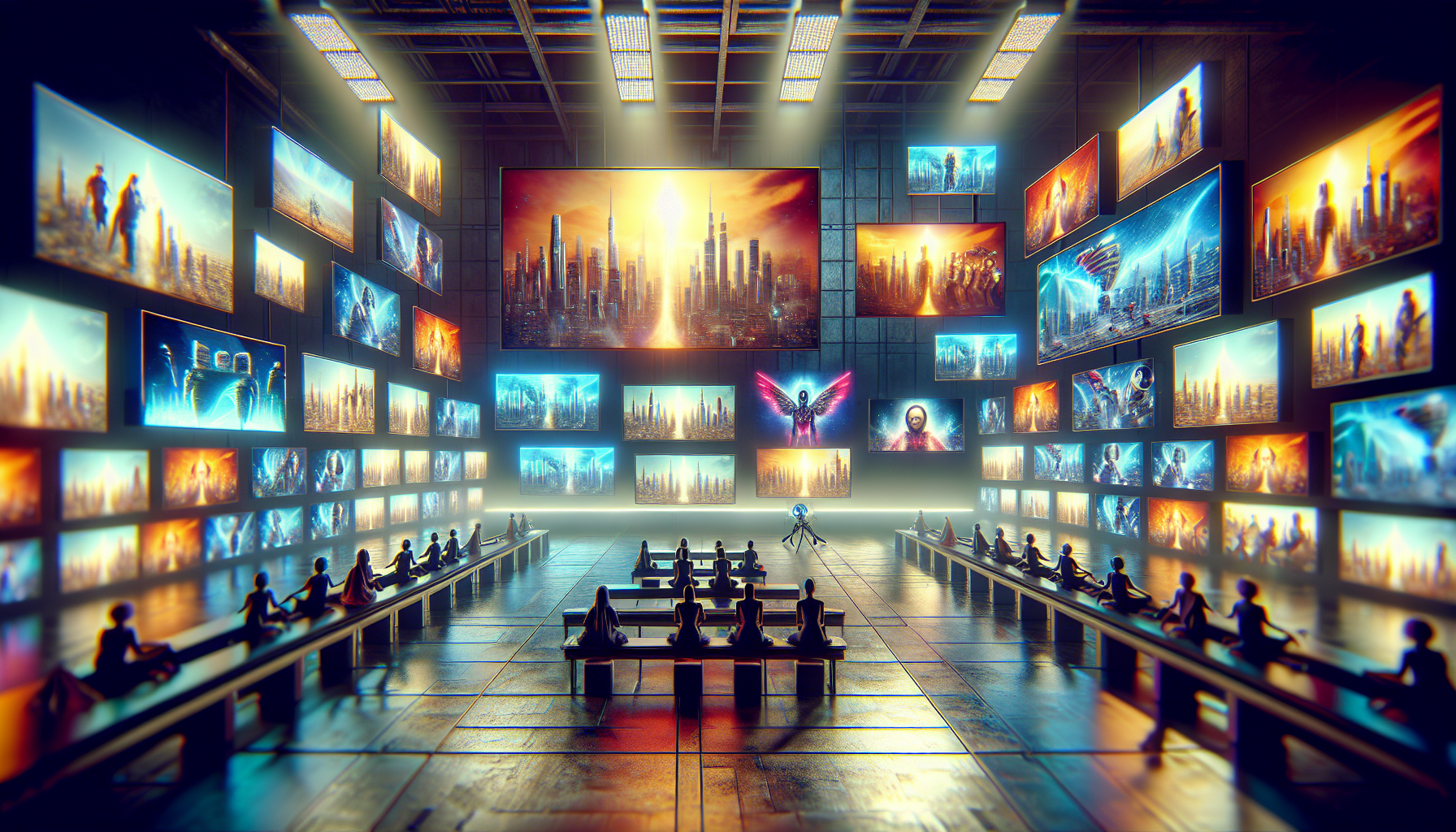Adverts
Exploring the future has never been as fascinating as it is today. The rapid advancement of technology has transformed concepts that were once just imaginary into tangible innovations, making what seemed like science fiction part of our daily lives. From smart devices to autonomous systems, we are witnessing an era where the impossible becomes reality, redefining the way we interact with the world around us.
Artificial intelligence, for example, is no longer just an element of futuristic films; it has become a surprising part of our daily lives. It is present in virtual assistants that make our routines easier, in algorithms that personalize digital experiences, and even in health systems that help diagnose diseases with impressive accuracy. This technology is not only revolutionizing industries, but also shaping new forms of human interaction.
Adverts
Furthermore, robotics is advancing rapidly, bringing with it the promise of a future where humans and machines coexist harmoniously. From robots that perform household chores to those that explore extreme environments in space, robotics is pushing the boundaries of what is possible, paving the way for a more efficient and connected society.
Augmented reality and virtual reality are also emerging as transformative technologies. These tools offer immersive experiences that are redefining areas such as entertainment, education and professional training. With them, it is possible to experience alternative worlds and interact in completely new ways, making experiences that were previously restricted to the imagination, now accessible and tangible.
Adverts
Finally, the concept of smart cities is gaining momentum, promising to transform our urban spaces into more sustainable and efficient environments. Sensors, real-time connectivity and data analytics are at the heart of these cities, providing an environment where technology works in the service of collective well-being. As we explore the future, these technological innovations invite us to rethink our relationship with the world, paving the way for a tomorrow that seems to have come straight out of a science fiction script. 🚀

Augmented and Virtual Reality: The Future That Has Already Arrived
When we talk about augmented and virtual reality, it seems like we're entering a parallel universe, where the only thing we're missing is a remote control to change dimensions. Augmented reality (AR) adds digital elements to our physical world, while virtual reality (VR) transports us to a completely digital world. And no, this isn't something from a Spielberg movie, but a very tangible reality.
Augmented reality glasses, for example, can transform us into true futuristic heroes in our everyday lives. Imagine walking down the street and receiving real-time information about what’s around you, like a GPS that takes you to the nearest bakery that still has fresh bread. In virtual reality, however, immersion is total. You can climb Everest without leaving your living room or explore the bottom of the sea without having to learn how to swim. But let’s be honest, VR also has its dangers: who hasn’t been scared when seeing a dog jump on the screen while you’re fully immersed in a horror game?
And it doesn’t stop there! AR and VR have applications that go beyond entertainment. In medicine, for example, they are used to simulate surgeries and train doctors without the need for a real scalpel. And in education, they allow students to explore the solar system without having to hitch a ride on a rocket. Yes, my friends, the future is already here, and it’s more exciting than an action movie with extra popcorn.
Artificial Intelligence: The Robot of the Future is Already Among Us
If there’s one thing that science fiction movies have always promised us, it’s that robots would take over the world. And, well, they didn’t lie. Artificial intelligence (AI) is increasingly present in our daily lives, whether it’s in personal assistants that answer our silliest questions or in algorithms that decide what we’re going to watch on TV. And who hasn’t found themselves arguing with Alexa or Siri, only to realize that they were winning 10-0 in an argument with a machine?
AI has impressive abilities, like processing data at a speed that would make The Flash jealous, or analyzing patterns and making split-second decisions. However, when Siri insists on calling “SpongeBob” “Bob Sponge,” we realize that it still has a long way to go. But hey, if even humans have their flaws, who are we to judge?
AI is also revolutionizing areas such as health and security. Using machine learning, it can predict diseases by analyzing symptoms before even consulting a doctor. In the security sector, smart cameras identify suspicious behavior, providing greater security without the need for a Robocop-style police robot roaming around the city.

Internet of Things: The Connected Device Revolution
The Internet of Things (IoT) is like that gossipy neighbor who knows everything that happens on the street, but without the judgment. We are talking about devices that communicate with each other and make our lives more practical, connecting the physical world to the digital. From refrigerators that make your shopping list for you, to lights that turn on when you arrive home, IoT is making everyday life worthy of a futuristic soap opera.
IoT is already at work in smart homes, where the coffee maker starts brewing your coffee when your alarm clock rings, or where the thermostat adjusts the room temperature before you even get home. And don’t worry about the future of marriages: when the refrigerator starts making the shopping list on its own, the divorce from pen and paper is inevitable.
This technology is also having an impact on industry and agriculture. Connected sensors can monitor soil quality, aid in harvesting, and even predict pests before they cause damage. In industry, predictive maintenance prevents machine failures before they occur. Who would have thought that one day our crops and factories would be as high-tech as an episode of “The Jetsons”?
Autonomous Transportation: The Future of Transportation is Already on the Road
When we talk about self-driving cars, the first image that comes to mind is the famous “Back to the Future”, with flying cars and Marty McFly trying not to crash into a blimp. The reality, however, is that autonomous transport is already on the road, and we don’t need a DeLorean to see it happen.
Self-driving cars are equipped with sensors and cameras that allow them to detect obstacles, interpret traffic signs, and get you from point A to point B without you having to touch the steering wheel. Sure, sometimes a self-driving car might act like a novice driver who brakes in the middle of the road when he sees a fallen leaf. But overall, these vehicles promise to make traffic safer and more efficient.
In addition to cars, there are also initiatives to create autonomous buses, drones and even ships. Imagine a bus that always arrives on time, or a drone that delivers your pizza while it’s still warm. Maybe the future isn’t that far away, and who knows, maybe one day we’ll even have flying taxis to get us out of our daily traffic jams.

Advanced Robotics: When the Machine Becomes Your Companion
Ah, advanced robotics! We are already living in a world where robots not only dance like in internet videos, but also help us with everyday tasks. And we are not just talking about robot vacuum cleaners that chase cats around the house, but robots that work side by side with humans in factories, hospitals and even at home.
These robots are becoming increasingly sophisticated, capable of learning from their interactions and adapting their behavior. They can assist in complex surgeries, carry heavy packages, and perhaps one day even prepare that dinner you don’t feel like cooking. But of course, we’re still far from having a robot butler a la “I, Robot.”
In terms of entertainment, robots are also making a name for themselves. There are dancing robot shows that would make even Michael Jackson rethink his moves. And in education, robots are being used to teach children how to code, preparing the next generation of mad scientists who will create even more futuristic technologies.
3D Printing: Creating the Future Layer by Layer
3D printing is one of those technologies that makes us feel like we’re living in an episode of “Star Trek.” The ability to create three-dimensional objects from a digital file is something that seems like magic, but it’s actually pure science. And the most incredible thing is that, today, 3D printing is within our reach.
From custom medical prosthetics to airplane parts, 3D printing is revolutionizing the way we produce and consume. We no longer have to wait months for a replacement part to be manufactured and delivered; we can simply print it at home. And let’s not forget about gastronomy: there are already 3D printers that create food with unique shapes and textures. Who knows, maybe one day you’ll be able to print your own pizza at home, without having to wait for delivery?
Fashion is also benefiting from this technology, with clothing and accessories being printed to order, with no waste of material. And in architecture, 3D printing is already being used to build entire houses, layer by layer, quickly and efficiently. The future is being shaped by 3D printing, and it’s something that not even Gene Roddenberry could have predicted.
Quantum Computing: Unlocking the Power of Infinity
If classical computing is already a marvel of technology, quantum computing is like comparing an oxcart to a spaceship. This mysterious and fascinating field is unlocking the power of the infinitesimally small to solve complex problems at astonishing speed. Think of quantum computing as that math genius who solves a Rubik's Cube blindfolded in less than a second.
Quantum computers operate with qubits, which can represent 0 and 1 at the same time, thanks to the phenomenon of quantum entanglement. This allows them to process a huge amount of data simultaneously. And if you're thinking that this is the stuff of fiction, know that technology giants like Google and IBM are already investing heavily in this area, in search of computers capable of solving problems that classical computers would take thousands of years to solve.
While we’re still in the early stages of quantum computing, the potential is enormous. Applications in areas such as cryptography, modeling molecules for new drugs, and optimizing complex systems are on the horizon. The quantum future is bright, and who knows, maybe one day we’ll be able to perform calculations so complex that even Sheldon Cooper would be impressed. 🚀
Conclusion
In conclusion, the journey through the fascinating world of futuristic technologies that have already become reality takes us to a new level of understanding about human potential. First, it is undeniable that innovations such as artificial intelligence, augmented reality and biotechnology are shaping our society in ways that could previously only be imagined in science fiction films. These technologies are not only enhancing our capabilities, but also transforming entire industries, such as healthcare, education and entertainment.
Furthermore, the speed at which these innovations are being integrated into our daily lives is astonishing. They offer solutions to complex problems, driving efficiency and sustainability. However, it is crucial to remember that while these innovations bring numerous advantages, they also raise ethical questions and challenges that need to be addressed responsibly.
On the other hand, by embracing these technologies, we are undoubtedly pioneering the future. Therefore, it is essential that we continue to invest in research and development, ensuring that these advances are accessible and beneficial to all of society. By doing so, we can ensure that technological progress goes hand in hand with human development, creating a brighter and more inclusive future for all. 💡 With this in mind, we must remain alert to the endless possibilities that the future holds.




